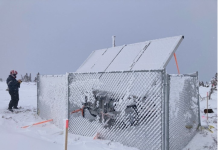Independent energy expert and assurance provider DNV has led an initiative resulting in the revision of the DNV-ST-0376 rotor blade standard, in response to the dynamic landscape of wind-turbine development. This update, a product of joint industry collaboration, marks a milestone in enhancing reliability and safety within the wind-energy sector. In the realm of wind-turbine technology, heightened reliability standards are crucial to keep pace with advancements.

The project, tailored to meet the evolving needs of wind-turbine developers, owners, and operators, is aimed to ensure reliability and performance. Focusing on addressing the unique requirements of large, flexible blades for multi-megawatt turbines, the revised standard introduces comprehensive measures previously unaddressed in industry norms. “The pace of modern wind-turbine development demands that industry standards keep pace with changing trends and technologies,” said Kim Sandgaard-Mørk, Executive Vice President for Renewables Certification at DNV.
“Through the development of industry service documents such as service specifications, standards, and recommended practices, DNV is actively engaged in driving the renewable-energy sector forward. This update underscores our commitment to driving innovation and quality within the wind-energy sector. By prioritizing reliability and safety, we aim to bolster industry confidence and propel the global transition towards sustainable energy solutions.” “Not all wind-turbine blades are created equal,” said Christopher Harrison, principal engineer and service line leader for component certification, Energy Systems at DNV.
“Different design assumptions and methods, along with varying performance during validation tests, can result in differing blade performance over their lifespan. As stakeholders in the wind-energy sector, it’s crucial to understand and mitigate these risks.” During the project, 26 companies across the wind-turbine sector, including manufacturers, operators, and certifiers, contributed to refining and reviewing the standard. “Our goal was to provide wind-turbine stakeholders with the tools and knowledge necessary to navigate the complexities of blade development,” Harrison said.
More info www.dnv.com



























